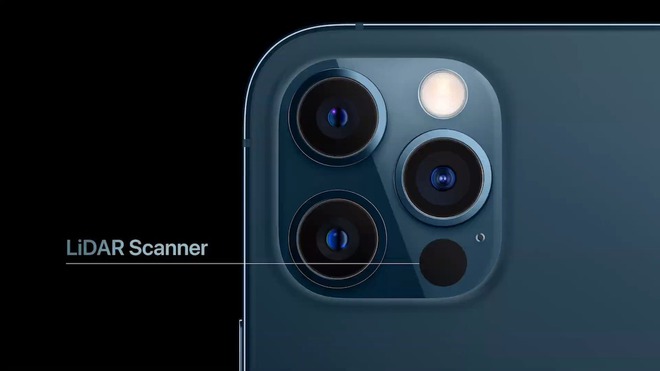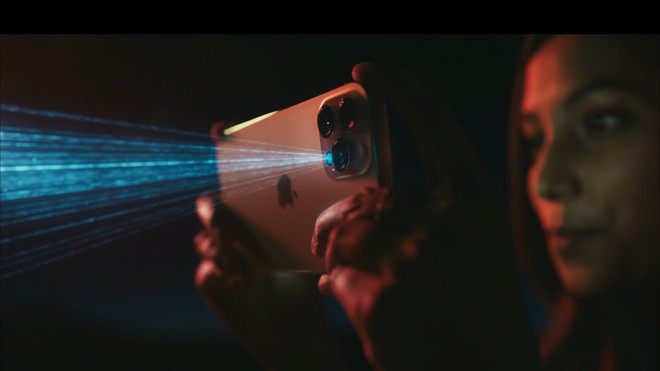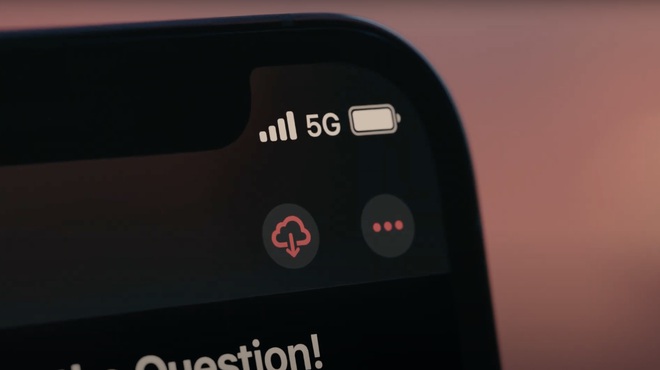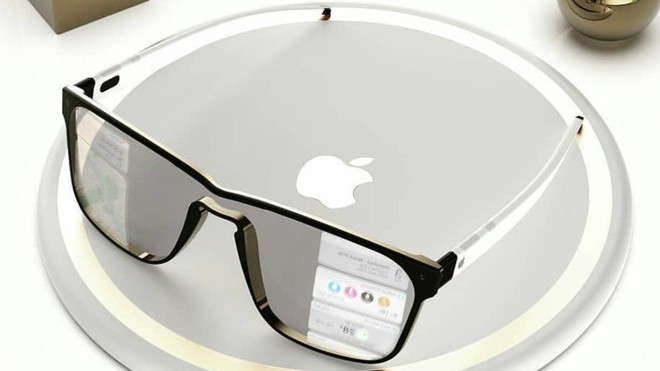The iPhone 12 Pro heralds an upcoming turning point for Apple and the computing industry
- Tram Ho
In the past, Apple CEO Tim Cook has expressed his enthusiasm for augmented reality a few times, even describing it as a technology that can bring about as big of a change as smartphones are doing.
The iPhone 12 Pro duo that Apple has just introduced at the last event will form the foundation for the breakthrough experience that Mr. Cook talked about when talking about AR.

Unlike the iPhone 12 Mini and the low-cost iPhone 12, the camera module on the iPhone 12 Pro series adds a camera and LiDAR scanner. This makes a big feature difference – besides the more colorful imaging capabilities – that the devices will understand the surfaces around it.
Both 5G and the LiDAR scanner are key technologies for augmented reality applications, and they both landed on the iPhone at the same time, at a time when Apple was supposed to be developing AR glasses. If these rumors and reports come true, these AR glasses could be Apple’s landmark computing device in the future.
LiDAR sensor – more than just taking good pictures
The LiDAR sensors, which Apple first introduced on the 2020 iPad Pro, can reconstruct the depth map of surrounding surfaces by measuring how long light travels from it to the subject and responds.

During the event, Apple said this technology will help your iPhone quickly understand the surface of the surrounding environment, thus improving the performance of augmented reality applications. According to Sebastiaan de With, co-founder of photography app Halide, the LiDAR sensor’s distance detection capabilities could make it easier for developers to extend the scope of AR apps to a room.
Once you understand how LiDAR fundamentally works and what it can do, you will see how important it is to augmented reality applications. But these AR apps are also difficult to work on smartphones without 5G technology.
5G connectivity – more than faster speeds
Next-generation wireless network technology is important to AR because it allows devices to maintain a constant, low-latency connection to the cloud, which means heavy computation, especially interoperability. 3-dimensional image processing in virtual reality, no need to run on the device itself. In other words, 5G will allow devices to run heavy programs without the need for powerful processors on the device.

This also allows tech companies to make computing devices thinner and lighter than the ones you use every day – smart glasses, for example, like Cristiano Amon, president of Qualcomm’s mobile division. know. Heavy glasses like the HoloLens can be replaced with devices that are about the same size and weight as regular glasses and still have comparable features.
” It won’t replace your phone, but you’ll have a completely different type of device .” Mr. Amon said. ” Imagine a revolution with smart glasses .”
This year is the first year Apple is introducing devices with LiDAR scanners designed for better AR performance, with the 2020 iPad Pro and iPhone 12 Pro. But rumors suggest that Apple is also designing an AR wearable and another pair of smart glasses. However, they will not appear in the future anytime soon.
Build a foundation for the future

According to Bloomberg correspondent Mark Gurman, Apple wearables will simultaneously deliver both augmented and virtual reality experiences. Furthermore, the device will likely launch in 2021 or 2022. The device promises to bring new experiences to activities such as gaming, online meeting, as well as entertainment. A pair of lighter glasses dedicated to augmented reality will arrive in 2023.
Analyst Minh-Chi Kuo, who often has fairly accurate predictions about an Apple device, also thinks that Apple will launch a type of augmented reality wearable in 2022.
So far, Apple has never said anything about its plans to launch an augmented reality wearable, but if the company plans to launch such a device by 2022, bringing LiDAR technology to the iPhone this year will help. Developers prepare and pre-perfect their own high-quality AR applications.
It is clear that the iPhone 12 Pro line is laying the groundwork for an upcoming turnaround for Apple – more importantly, so far its Android competitors have been largely unprepared for the coming. this.
Check out Business Insider
Source : Genk
